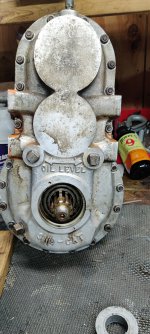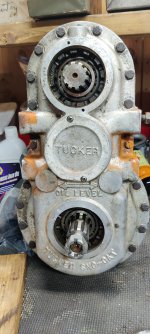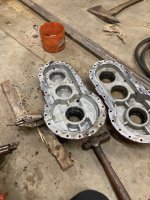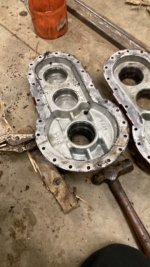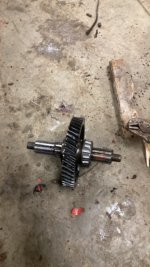The transfer case (probably not the correct name) was leaking from the front and rear driveshaft seals. I took the drive shafts out and it looks like a pretty easy to replace the seals. I decided to rebuild the brakes and replace the u joints. I still have to ID the u joints and the brake caliper. Can anyone help with that? I can probably match the U joints by measuring them, they look like common Spicers. Does anyone know how to ID the brake caliper and shoes? There were no obvious manufacturing marks on it.
Also would it be advisable to take the t-case out, split it and do a good inspection? My understanding is it a fairly straight forward chain drive. Except for the leaks it seems to be ok. Are there common problems I should be looking for? I am pretty sure replacing the seals will fix the leakage problem. I saw no leakage at the case seam.
Thanks for any help or advice.
John
Also would it be advisable to take the t-case out, split it and do a good inspection? My understanding is it a fairly straight forward chain drive. Except for the leaks it seems to be ok. Are there common problems I should be looking for? I am pretty sure replacing the seals will fix the leakage problem. I saw no leakage at the case seam.
Thanks for any help or advice.
John

